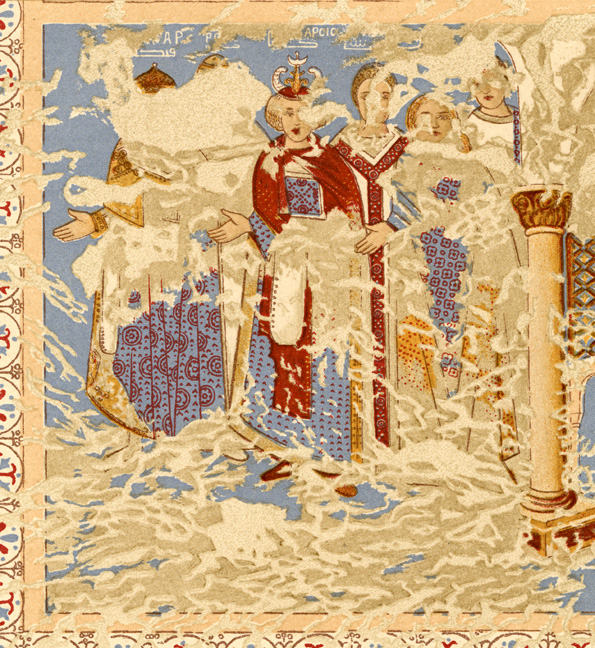|
Islamic Invasion Of Iberia
{{dab ...
Muslim (or Islamic) invasion of Iberia may refer to: *Muslim conquest of the Iberian Peninsula (beginning in 711) *Muslim invasions of Caucasian Iberia: ** Umayyad invasion of Georgia (735–737) **Sajid invasion of Georgia (914) ** Great Turkish Invasion (1080s) See also *Arab rule in Georgia Arab rule in Georgia, natively known as Araboba ( ka, არაბობა), refers to the period in the history of Georgia when parts of what is now Georgia came under Arab rule, starting with the first Arab incursions in the mid-7th century u ... [...More Info...] [...Related Items...] OR: [Wikipedia] [Google] [Baidu] |
Muslim Conquest Of The Iberian Peninsula
The Muslim conquest of the Iberian Peninsula (; 711–720s), also known as the Arab conquest of Spain, was the Umayyad conquest of the Visigothic Kingdom of Hispania in the early 8th century. The conquest resulted in the end of Christian rule in most of Iberia and the establishment of Muslim Arab- Moorish rule in that territory, which came to be known as al-Andalus, under the Umayyad dynasty. During the caliphate of the sixth Umayyad caliph al-Walid I (), military commander Tariq ibn Ziyad departed from North Africa in early 711 to cross the Straits of Gibraltar, with a force of about 1,700 men, to launch a military expedition against the Visigoth-controlled Kingdom of Toledo, which encompassed the former territory of Roman Hispania. After defeating king Roderic at the Battle of Guadalete in July the same year, Tariq was reinforced by an Arab force led by his superior '' wali'' Musa ibn Nusayr and continued northward. In 713, Theodemir, the Visigothic count of Mur ... [...More Info...] [...Related Items...] OR: [Wikipedia] [Google] [Baidu] |
Umayyad Invasion Of Georgia
The Umayyad invasion of Georgia, known in Georgian historiography as the Invasion of Marwan the Deaf ( ka, მურვან ყრუს შემოსევა, tr) took place from 735 to 737, initiated by last Umayyad caliph Marwan II against the Principality of Iberia. The goals of the campaign are disputed among historians. The Georgian historiography insists its main purpose was to finally break the stiff Georgian resistance against Arab rule, however, the Western historians such as Cyril Toumanoff,Toumanoff, Cyril, "Iberia between Chosroid and Bagratid Rule", in ''Studies in Christian Caucasian History'', Georgetown, 1963, p. 405. Accessible online at and Ronald Suny, Suny, Ronald Grigor (1994), ''The Making of the Georgian Nation: 2nd edition'', p. 28. Indiana University Press, view it as a general campaign directed at both the Byzantine Empire, who exerted its domination over Western Georgia, and the Khazars, whose repeated raids affected not only Iberia (Eastern G ... [...More Info...] [...Related Items...] OR: [Wikipedia] [Google] [Baidu] |
Sajid Invasion Of Georgia
Sajid invasion of Georgia was the final attempt to establish Muslim hegemony in the South Caucasus before the Seljuk invasions. Yusuf Ibn Abi'l-Saj, a Sajid emir, whom Georgians knew as Abul-Kasim, invaded Georgian lands in 914, with the purpose to strengthen gradually weakening Arab power and Muslim hold on Georgian principalities. He first reached Tbilisi, then turned towards Kakheti and besieged the fortresses of Ujarma and Botchorma. Later, he made peace with Kvirike, chorepiscopus (ruler) of Kakheti and returned control of Ujarma to him. After this, he marched his forces to Kartli and laid waste to it. Georgians themselves destroyed the fortifications of Uplistsikhe, so it wouldn't fall to the hands of the enemy. The Muslim forces then raided Meskheti as well, but were unable to take the Tmogvi fortress and retreated. On the way they besieged Q'ueli fortress and took it despite stiff resistance. Muslims captured the military commander of the castle, Gobron, and put him to ... [...More Info...] [...Related Items...] OR: [Wikipedia] [Google] [Baidu] |
Great Turkish Invasion
In Georgian historiography, the Great Turkish Invasion, also translated as the Great Turkish Troubles ( ka, დიდი თურქობა, tr), refers to the continuous attacks and settlement of the Seljuq-led Turkic tribes in the Georgian lands during the reign of George II in the 1080s. The term has its origin in the 12th-century Georgian chronicle and is accepted in the modern scholarship of Georgia. The Seljuq invasions resulted in a severe crisis in the kingdom of Georgia, leaving several of its provinces depopulated and weakening the royal authority, until the tide was reversed by the military victories of King David IV (r. 1089–1125). Background The Seljuks made their first appearances in Georgia in the 1060s, when the Sultan Alp Arslan laid waste to the south-western provinces of the Georgian kingdom and reduced Kakheti. These intruders were part of the same wave of the Turkish movement which inflicted a crushing defeat on the Byzantine army at Manzikert in 107 ... [...More Info...] [...Related Items...] OR: [Wikipedia] [Google] [Baidu] |
